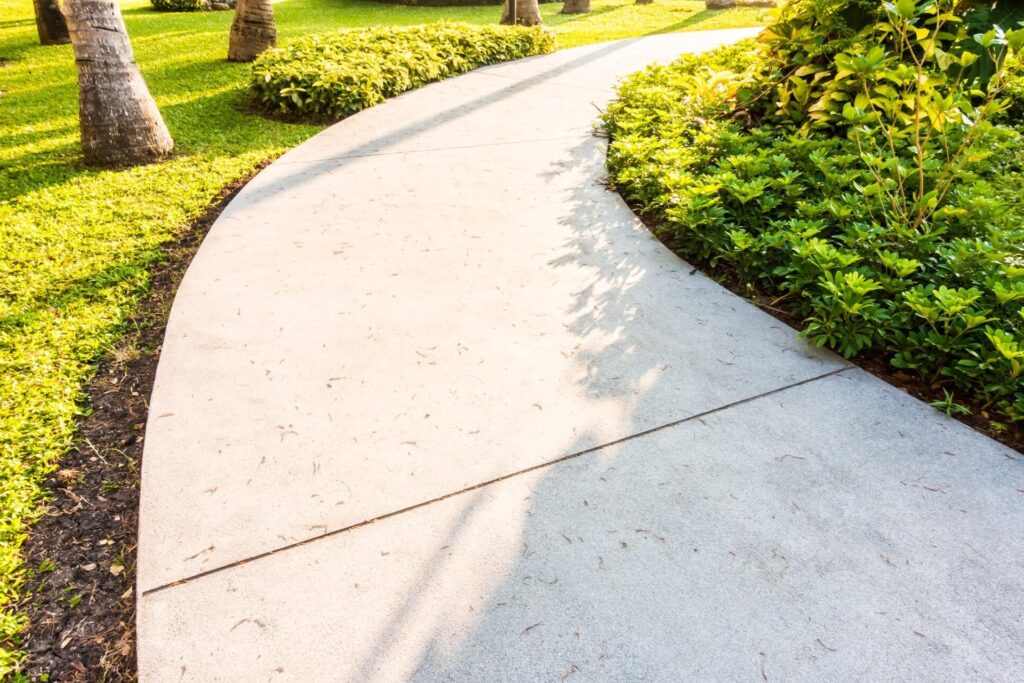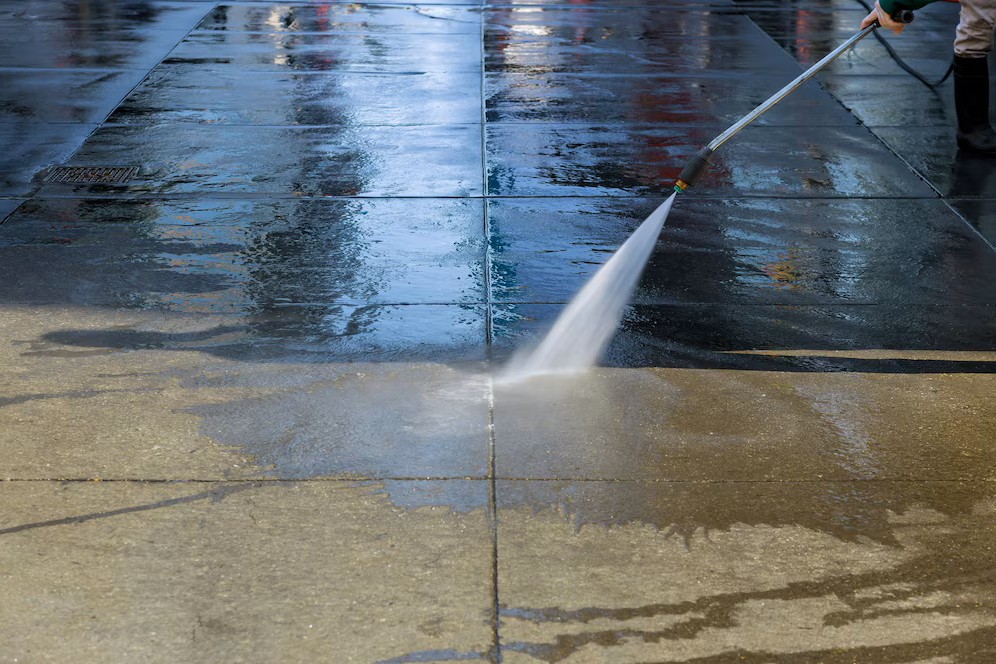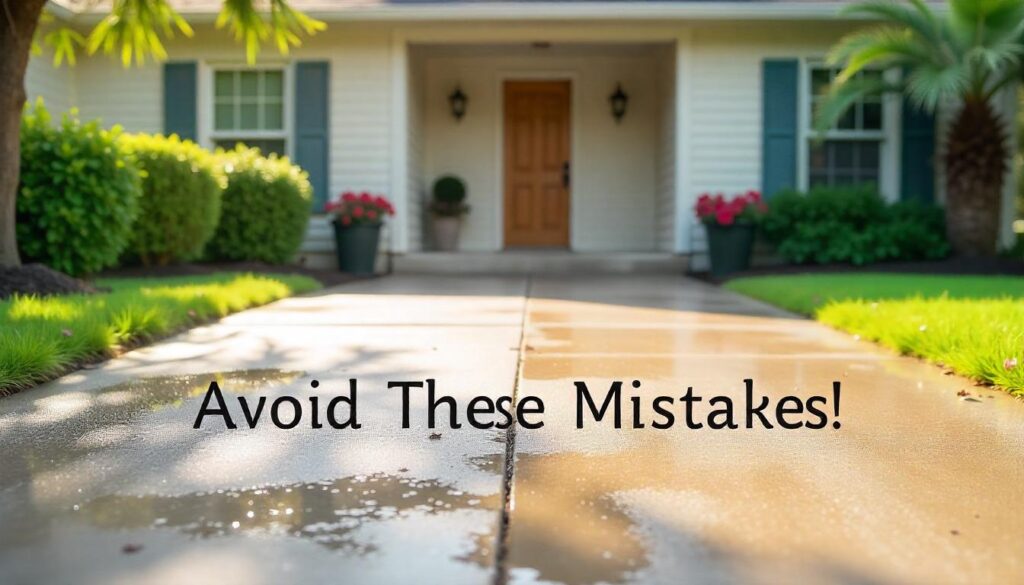As a homeowner in Katy or Richmond, TX, you take pride in keeping your property pristine. Pressure washing is a fantastic way to refresh your driveway, siding, or deck, especially in Texas’s humid climate where algae and grime thrive.
However, mistakes during pressure washing can damage your home, waste time, or even cause injury. At Pureview, we’re here to help you maintain a sparkling and safe home. In this guide, we’ll cover five common pressure washing mistakes to avoid and share practical tips to ensure your Katy, TX property shines without the risks.
1. Using Too Much Pressure
One of the biggest pressure washing mistakes is cranking up the pressure too high. While it’s tempting to blast away stubborn dirt, excessive pressure can damage surfaces like wood siding, soft stone, or even concrete.
- Why It’s a Problem: High pressure can strip paint, gouge wood, or crack concrete, leading to costly repairs. For example, wood decks in Katy homes can be ruined by using a pressure washer above 1,500 PSI (Angi: Pressure Washing Mistakes).
- Katy-Specific Tip: In humid areas like Katy, TX, algae buildup on decks is common. Use a low-pressure setting (1,000–1,500 PSI) with a wide-angle nozzle to clean safely without damaging wood or vinyl siding.
- How to Avoid It: Check your pressure washer’s PSI rating and match it to the surface (e.g., 2,000–3,000 PSI for concrete driveways, 1,000–1,500 PSI for wood or delicate surfaces). Test on a small, hidden area first.
2. Skipping Surface Preparation
Pressure washing without preparing the surface is like painting without priming—it leads to subpar results. Dirt, debris, or loose paint left on surfaces can reduce the effectiveness of the wash or cause damage when blasted with water.
- Why It’s a Problem: Debris can scratch surfaces, and loose paint can clog the pressure washer. In Katy’s humid climate, mold and mildew can cling tightly to driveways or fences, requiring pre-treatment (Squeegee Squad: Pressure Washing Tips).
- Local Insight: Pollen and algae are common on Richmond and Katy properties, especially in spring. Pre-treating with a biodegradable cleaner helps loosen these contaminants.
- How to Avoid It: Sweep or blow away loose debris, remove furniture or planters, and apply a mild, eco-friendly detergent before washing. Pureview’s exterior cleaning services can help prep your surfaces for a flawless pressure wash.

3. Choosing the Wrong Nozzle or Spray Pattern
Pressure washers come with different nozzles, each designed for specific tasks. Using the wrong nozzle can either damage surfaces or make cleaning ineffective.
- Why It’s a Problem: A narrow, high-pressure nozzle (e.g., 0-degree) can etch concrete or strip paint, while a too-wide nozzle (e.g., 40-degree) may not clean tough stains like oil on driveways (HomeAdvisor: Pressure Washing Guide).
- Katy-Specific Tip: For concrete driveways common in Katy, use a 25-degree nozzle to remove dirt and oil stains without etching. For wooden fences, a 40-degree nozzle is safer to prevent splintering.
- How to Avoid It: Use a 15- or 25-degree nozzle for most surfaces and a 40-degree nozzle for delicate areas. Always start with a wider spray and adjust as needed. Refer to your pressure washer’s manual for guidance.
4. Ignoring Safety Precautions
Pressure washing may look straightforward, but it involves high-powered equipment that can cause injury or property damage if mishandled. Ignoring safety precautions is a risky mistake.
- Why It’s a Problem: High-pressure water can cut skin, damage eyes, or cause falls if you lose control of the wand. Electrical hazards are also a concern if you accidentally spray outlets or power lines (Forbes: Pressure Washing Safety).
- Local Insight: In Katy, TX, where summer heat can be intense, dehydration or fatigue during long pressure washing sessions can increase accident risks.
- How to Avoid It:
- Wear protective gear like goggles, gloves, and closed-toe shoes.
- Keep the wand pointed away from people, pets, and windows.
- Avoid spraying near electrical outlets or wires.
- Take breaks to stay hydrated, especially in Texas’s hot climate.
- For large or complex jobs, hire professionals to ensure safety and quality.
5. Pressure Washing in Unsuitable Weather
Timing your pressure washing project is critical, but many homeowners overlook weather conditions. Washing in the wrong weather can reduce effectiveness or create safety hazards.
- Why It’s a Problem: Washing during rain prevents surfaces from drying properly, diluting cleaning solutions. Extremely hot or windy days can cause detergents to dry too quickly, leaving streaks (Texas Pressure Washing: Best Practices).
- Katy-Specific Tip: In Katy and Richmond, TX, spring and fall are ideal for pressure washing, with moderate temperatures (50–80°F) and low rain chances. Avoid summer’s peak heat to prevent rapid drying or heat exhaustion.
- How to Avoid It: Check the weather forecast and aim for a dry, mild day. Ensure surfaces have time to dry after washing to prevent mildew regrowth, a common issue in humid Texas climates.

Why Avoiding These Mistakes Matters in Katy, TX
Katy and Richmond’s humid climate accelerates algae, mildew, and pollen buildup, making pressure washing a must for maintaining your home’s exterior. However, mistakes can lead to costly repairs or safety risks. By avoiding these pitfalls, you can:
- Protect your investment in your driveway, siding, or deck.
- Keep your family safe from slippery surfaces or allergens.
- Enhance your home’s curb appeal in competitive Katy neighborhoods.
At Pureview, we understand the unique challenges of maintaining a home in Texas’s climate. Our cleaning services complement pressure washing, ensuring your property stays spotless and safe.
DIY vs. Professional Pressure Washing
Not sure whether to pressure wash yourself or hire a pro? Here’s a quick comparison to help you decide:
| Option | Pros | Cons |
|---|---|---|
| DIY | Cost-effective (rentals cost $50–$100/day); flexible scheduling. | Risk of surface damage or injury if done incorrectly; time-consuming for large areas. |
| Professional | Expert results; safe handling of equipment; includes surface prep and repairs. | Higher cost ($150–$500 for most Katy homes). |
For small patios or fences, DIY can work if you follow these tips. For larger surfaces or delicate materials, Pureview recommends hiring professionals to avoid mistakes and achieve a flawless finish.
Conclusion
Pressure washing your home can transform its appearance, but avoiding common mistakes is key to keeping it sparkling and safe. By using the right pressure, preparing surfaces, choosing the correct nozzle, prioritizing safety, and timing your wash for optimal weather, you can achieve professional-quality results without the risks. In Katy’s humid climate, regular pressure washing is essential to combat algae and grime, protecting your home’s value and curb appeal.
Ready to give your property? Get a free quote right now!





